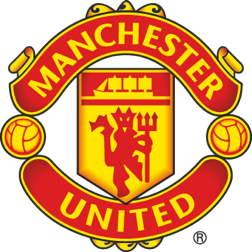The Old Trafford story: 1910-1930
Manchester United's history contains big names who have defined the club, but in more than a century of Old Trafford's existence two stand out above all others.
With money behind the club, United were storming the Football League, and won a first league title in 1908. Manchester's population had risen to two million, and with the introduction of reduced working hours, people had more time on their hands. Football began to increase in popularity, and Davies began planning a totally new 100,000-capacity stadium to ensure his club capitalised. Details of the new stadium had been revealed in March 1909 as United were on their way to the first FA Cup triumph of their history.
The stadium and the ground that it was built on would cost Davies and the club £60,000. A site was found five miles away from Bank Street, close to the Manchester Ship Canal and the Trafford Park industrial estate. Davies appointed Scottish architect Archibald Leitch to design the new stadium. Leitch, who built Craven Cottage and White Hart Lane, had a simple brief: "Create the finest stadium in the North." And although he had to scale the capacity down to 80,000 to save money, he succeeded.
The first game in the new stadium was played on 19 February 1910, against Liverpool. Despite having stars Billy Meredith and Charlie Roberts in the team, United lost 4-3. But the team went almost a year before losing at Old Trafford again, and this impressive home form helped to land the league title in 1911.Weeks later, Old Trafford was chosen to host one of the FA Cup semi-finals. In 1915 it hosted the final, between Chelsea and Sheffield United – later known as the "Khaki Cup Final" because most of the 49,557 crowd were in uniform. The first international at Old Trafford was played in 1926 between England and Scotland, when 49,000 fans saw the Scots win 1-0.
Old Trafford celebrates 110-year anniversary
ArticleThe famous stadium enjoys another landmark as the club is proud of our iconic home.
In the space of a year, the stadium set two attendance records – 70,504 was the largest pre-war crowd at Old Trafford for a United league match (Aston Villa on 27 December 1920) while the lowest attendance of 13 saw Stockport County play Leicester City in 1921, in a game moved from Edgeley Park which was closed due to crowd trouble. When the Railway Stand roof was extended a few years later, it marked the first of several improvements that led to Old Trafford being developed beyond recognition. Unlike many rivals who have had to consider leaving their city-centre homes to find space to expand, Davies' choice of location meant the ground could grow with the club. To this day, Old Trafford remains the envy of other clubs. If Davies and Leitch were around today, they would know at least one thing had never changed.
Discover more about the Manchester United Museum.




